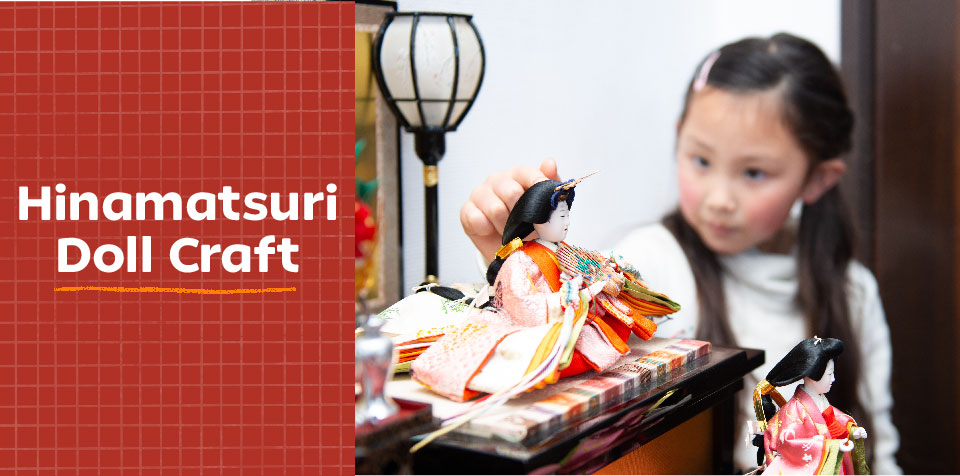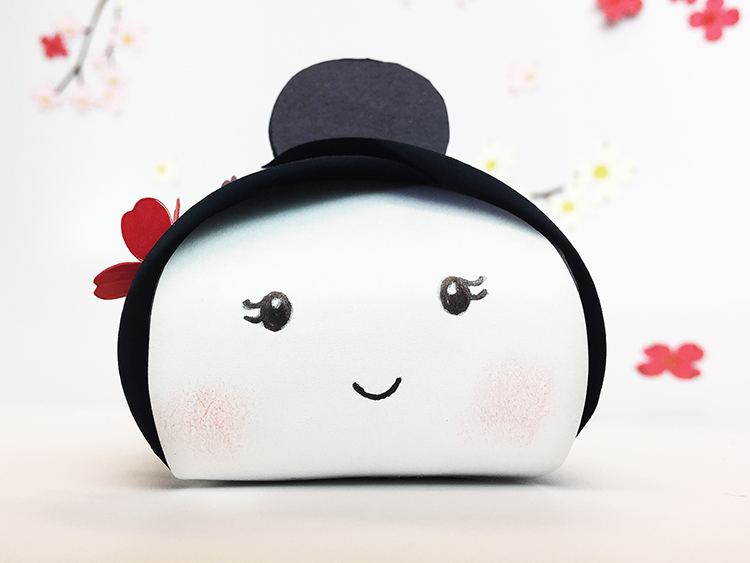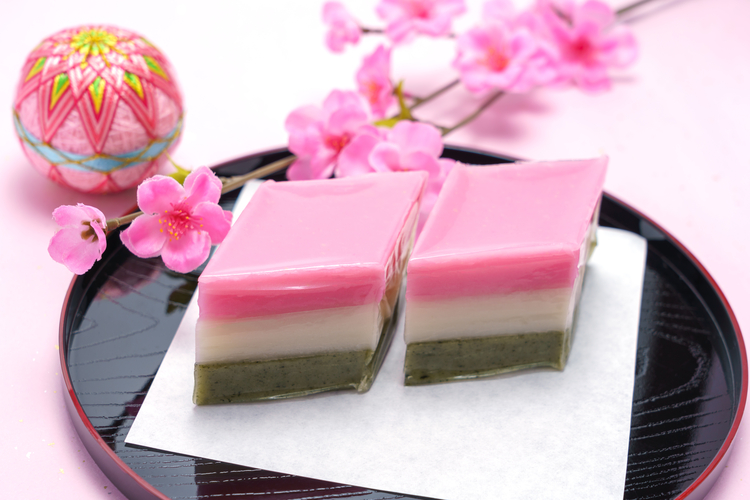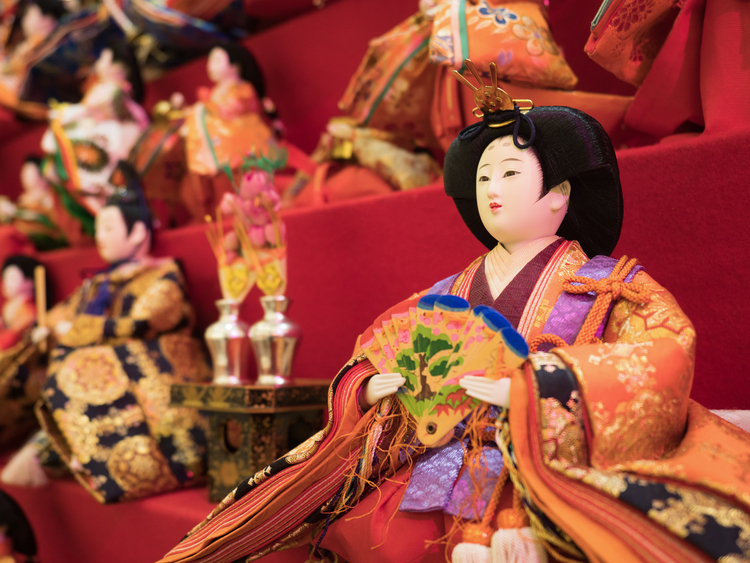
Celebrate Your Daughter with This Japanese Girls’ Day Craft
Hinamatsuri, or Girls’ Day, is a holiday with roots in the Japanese Shinto religion celebrated every March 3 to bring wishes for the health and happiness of the nation’s daughters.
The festival can be traced back to the Heian period (794–1185 BCE), a time characterized by significant developments in Japan’s art and literature. Hinamatsuri is one of five sekku (seasonal festivals) originating from this period, known together as gosekku (five seasonal festivals). The sekku take place on January 1, March 3, May 5, July 7, and September 9. Because these dates contain two odd numbers when written numerically (1/1, 3/3, 5/5, 7/7, and 9/9), they’re considered good luck.
The March 3 festival maintains an old tradition wherein the Heian nobility made simple paper dolls called hitogata. Initially, people used these Japanese dolls to ward off evil spirits. They would place the dolls in a river flowing toward the sea and let them drift away, taking any threat of bad luck with them. Over time, the holiday evolved to become a doll festival during which people express love and well-wishes for the young girls in their lives.
Today, the holiday has become more secular than religious. Families display elaborate ornamental dolls in their homes to celebrate hinamatsuri. The dolls are dressed in traditional courtly attire from the Heian period and represent the emperor, empress, and attendants who would have celebrated hinamatsuri in its earliest days. The dolls make for a beautiful arrangement, but they must be put away on March 4—otherwise, the household will experience bad luck.
Hinamatsuri is also a lovely celebration of the generational ties between women. The doll sets, called hina ningyo, often become family heirlooms that are passed down from mothers to daughters. Families typically throw parties for the young girls in the home, complete with traditional foods and the children’s favorite dishes.
This year, why not teach your daughter about Japanese culture and celebrate her on Girls’ Day? With just a few supplies, you can make a delightful doll box together and create a craft (and memories) to cherish.

How to Make a Hinamatsuri Doll Gift Box
This craft is a wonderful way to spend time with your daughter and show her just how special she is. Your child can perform each step of this activity, but young kids may need extra assistance.
Materials
- Black, red, and white construction paper
- Child-safe scissors
- Nontoxic glue
- White crayon
- Black marker
Directions
- Print out this box template and cut out the blue shape. Lay your template over a sheet of black construction paper. Trace the shape with a white crayon, then cut it out (including the two slits).
- To make the doll’s face, use the marker to trace the shape of the right or left arm of the template (one of the sides without a slit) onto white construction paper, then cut it out.
- Flip the white shape so the side with the marker outline is facing down. Use the marker to draw a sweet face on the blank side of the white shape. Glue the doll’s face to the matching arm of the black paper box. Fold up all sides of the black box (as shown on the printable template), keeping the white face on the outside.
- Cut a small flower out of red construction paper, and glue it to the “hair” of the folded box.
- The gift box is complete! For an extra-special surprise, place a small trinket or some candy inside the box to show your daughter just how much you care.

How Else Is Hinamatsuri Celebrated?
Hinamatsuri is a rich tradition cultivated for hundreds of years. Here are some other ways the Japanese celebrate this beautiful holiday today.
Peach Blossom Decorations
In addition to setting up a doll display, families typically decorate for Hinamatsuri with artificial peach tree blossoms. Historically, Girls’ Day fell around the same time peach trees bloomed—in fact, Hinamatsuri was once known as Momo no Sekku, or the Peach Festival. Now that Japan uses the Gregorian Calendar (the same calendar we use in the U.S.), this is no longer the case, but the fruit and its flowers remain an important symbol. In Japanese culture, peaches are considered a sign of spring’s arrival and a symbol that wards off evil spirits. Artificial recreations of the blossoms are a standard fixture in Hinamatsuri displays.
Traditional Foods
Families cook special foods for their daughters on Hinamatsuri, many of which have symbolic meanings. Some traditional foods include:
- Hishi mochi, a diamond-shaped dessert made from mochi (a rice flour cake). The cake has three layers: green to represent the roots and plants in the earth, white to symbolize snow on top, and pink to illustrate the vibrancy of life. According to tradition, girls eat these treats to grow up healthy and strong.
- Chirashizushi (which translates to “scattered sushi”), a rice dish topped with sashimi and varying ingredients, such as vegetables or egg. The food is usually topped with a dash of pink rice or fish roe for an extra feminine touch.

Explore New Cultures with Little Passports
Hinamatsuri is a beautiful celebration that reminds young girls just how loved they are. And Girls’ Day isn’t the only Japanese holiday centered on family: May 5 marks Children’s Day, while the Obon Festival is a late-summer celebration that honors one’s ancestors.
Your child can learn even more about the rich cultures of Japan and other faraway places with our World Edition subscription box. Every month, your child will receive a package containing stories, activity kits, and souvenirs from around the world, allowing them to learn and explore diverse countries from the comfort of home.
